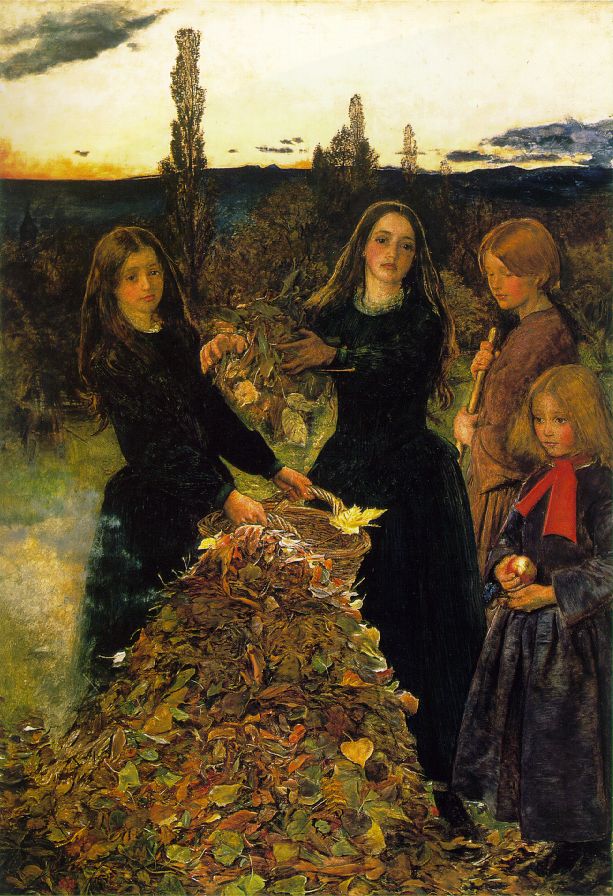- Autumn Leaves (painting)
backcolor=#FBF5DF
painting_alignment=right
image_size=250px
title= Autumn Leaves
artist=John Everett Millais
year= 1856
type=Oil on canvas
height=
width=
height_inch=
width_inch =
diameter_cm =
diameter_inch =
city=Manchester
museum=Manchester City Art Gallery "Autumn Leaves" (1856) is a painting by
John Everett Millais exhibited at theRoyal Academy in 1856. It was described by the criticJohn Ruskin as "the first instance of a perfectly painted twilight." Millais's wife Effie wrote that he had intended to create a picture that was "full of beauty and without a subject".The picture depicts four girls in the twilight collecting and raking together fallen leaves in a garden. They are making a bonfire, but the fire itself is invisible, only smoke emerging from between the leaves. The two girls on the left are portrayed in middle class clothing of the era; the two on the right are in rougher, working class clothing.
The painting has been seen as one of the earliest influences on the development of the
aesthetic movement . [Whistler's 'The White Girl': Painting, Poetry and Meaning, Robin Spencer, "The Burlington Magazine", Vol. 140, No. 1142 (May, 1998), pp. 300-311]Interpretations
The painting has typically been interpreted as a representation of the transience of youth and beauty, a common theme in Millais's art.
Malcolm Warner argues that Millais was influenced by the poetry ofTennyson , at whose house he had once helped to rake together autumn leaves. Warner suggests that lines from Tennyson's song "Tears, Idle Tears " in "The Princess" (1847) may have influenced him:Tears, idle tears, I know not what they mean.
Tears from the depth of some divine despair
Rise in the heart, and gather to the eyes,
In looking on the happy Autumn-fields,
And thinking on the days that are no more. [ [http://www.usp.nus.edu.sg/victorian/painting/millais/paintings/ringel3.html Victorian Web: Nostalgic Intensity in Millais's Autumn Leaves] ]The apple held by the youngest girl at the right may allude to the loss of childhood innocence implied by reference to
original sin and the expulsion from theGarden of Eden . [ [http://www.usp.nus.edu.sg/victorian/painting/millais/paintings/simmons3.html Mortality, Purity, and Religious Contemplation in Autumn Leaves] ]After a positive review from F.G. Stephens, Millais wrote to him that he had "intended the picture to awaken by its solemnity the deepest religious reflection. I chose the subject of burning leaves as most calculated to produce this feeling." [National Gallery of Art, Washington, "The Victorians: British Painting 1837-1901", p.73, 1997]
Notes
Wikimedia Foundation. 2010.

